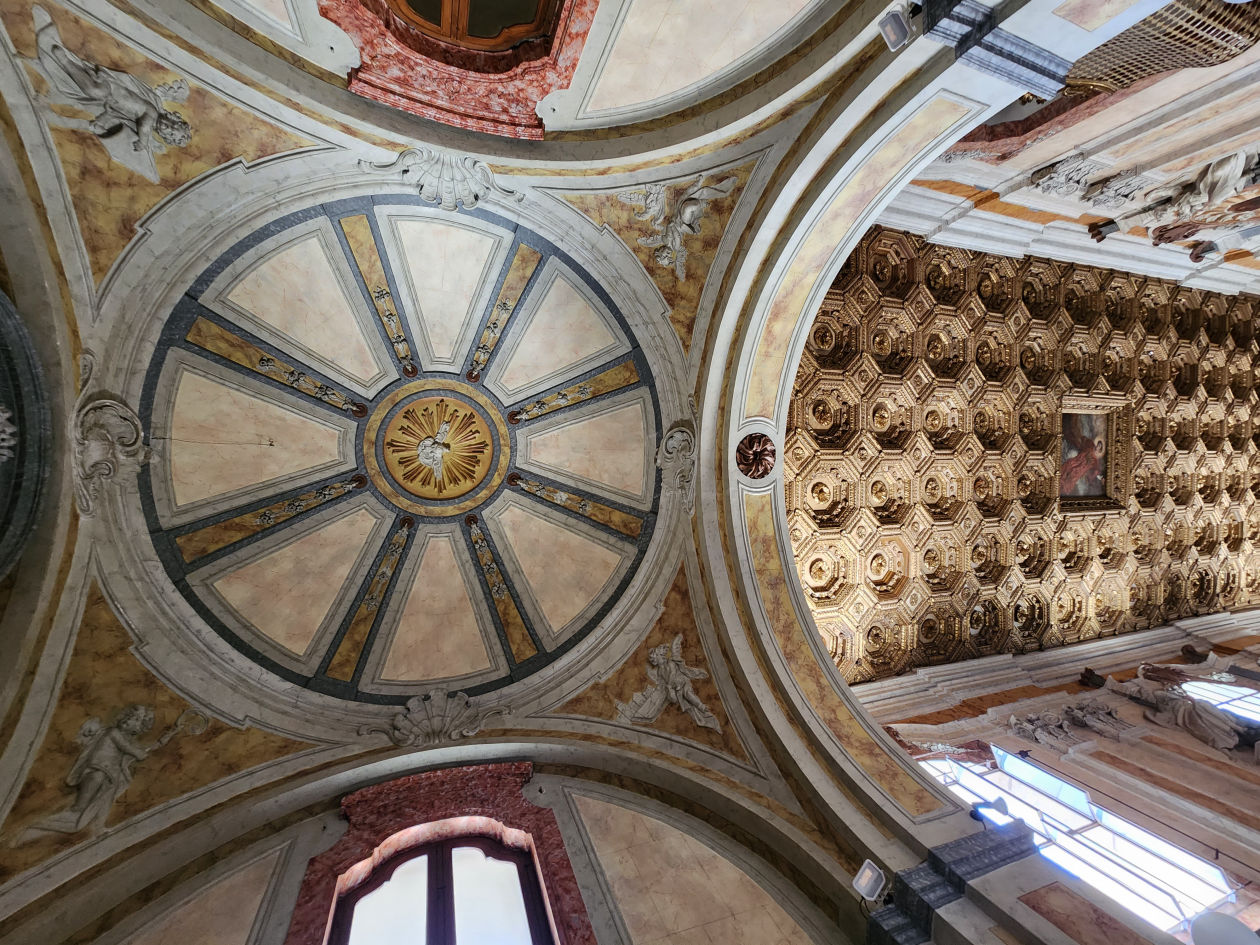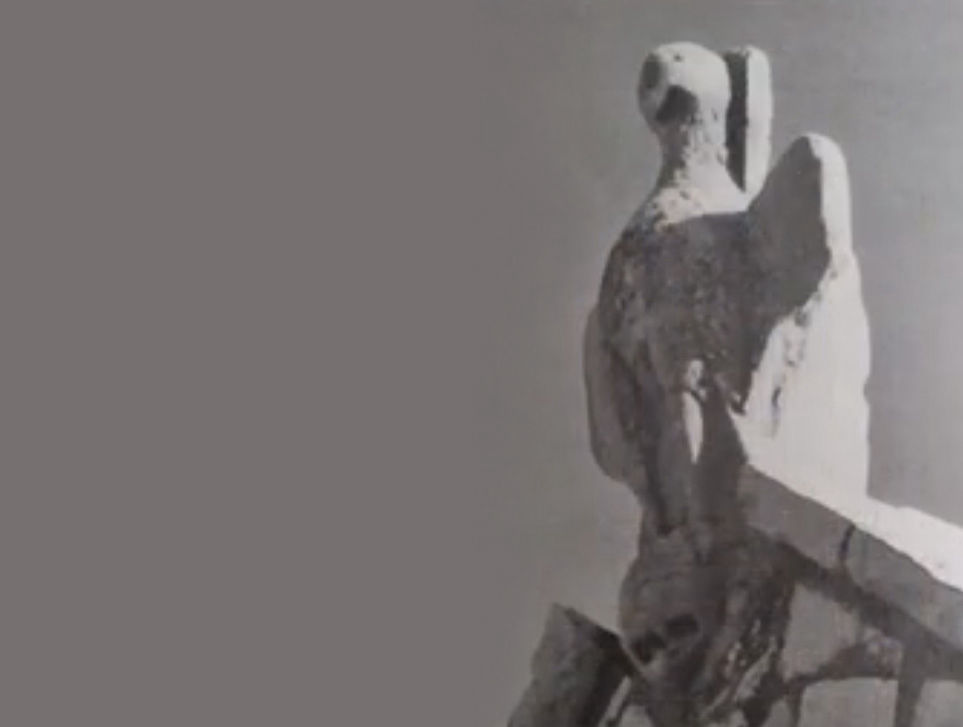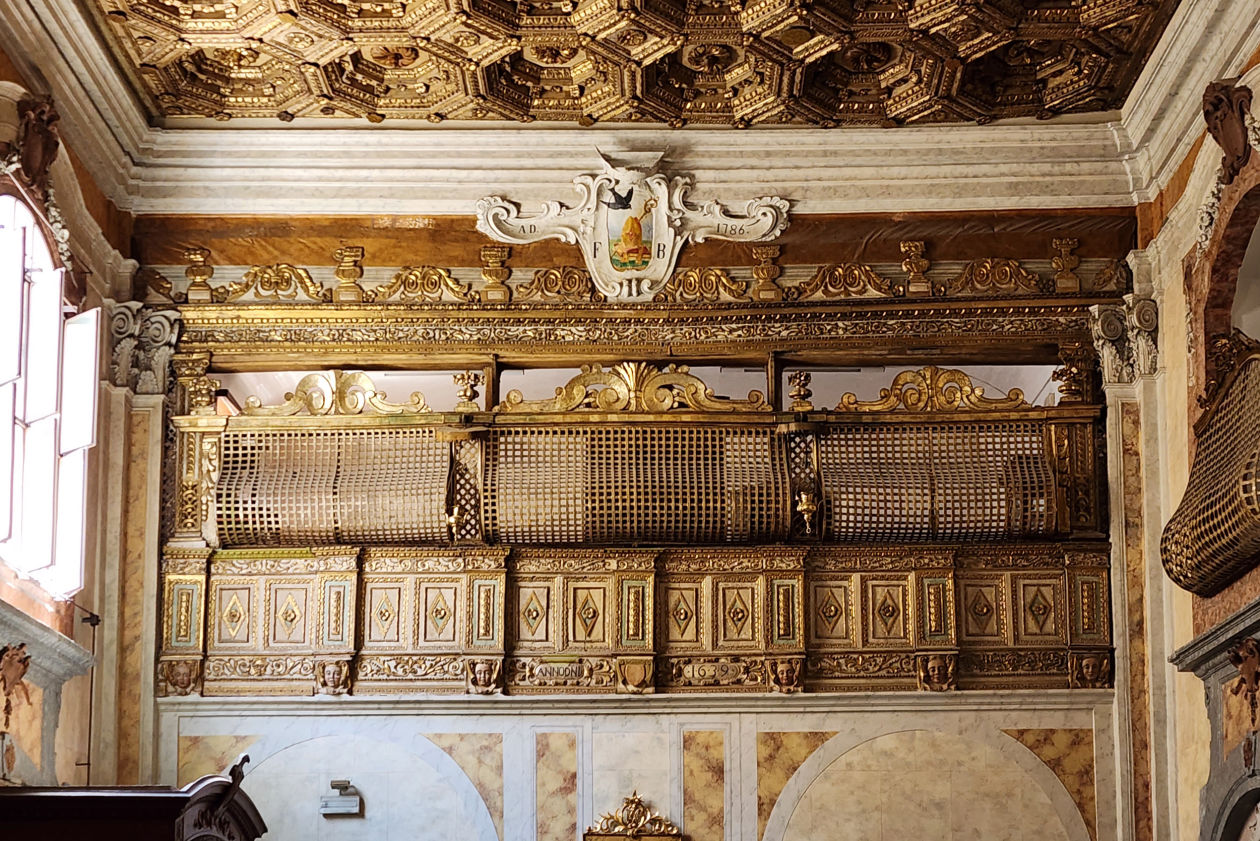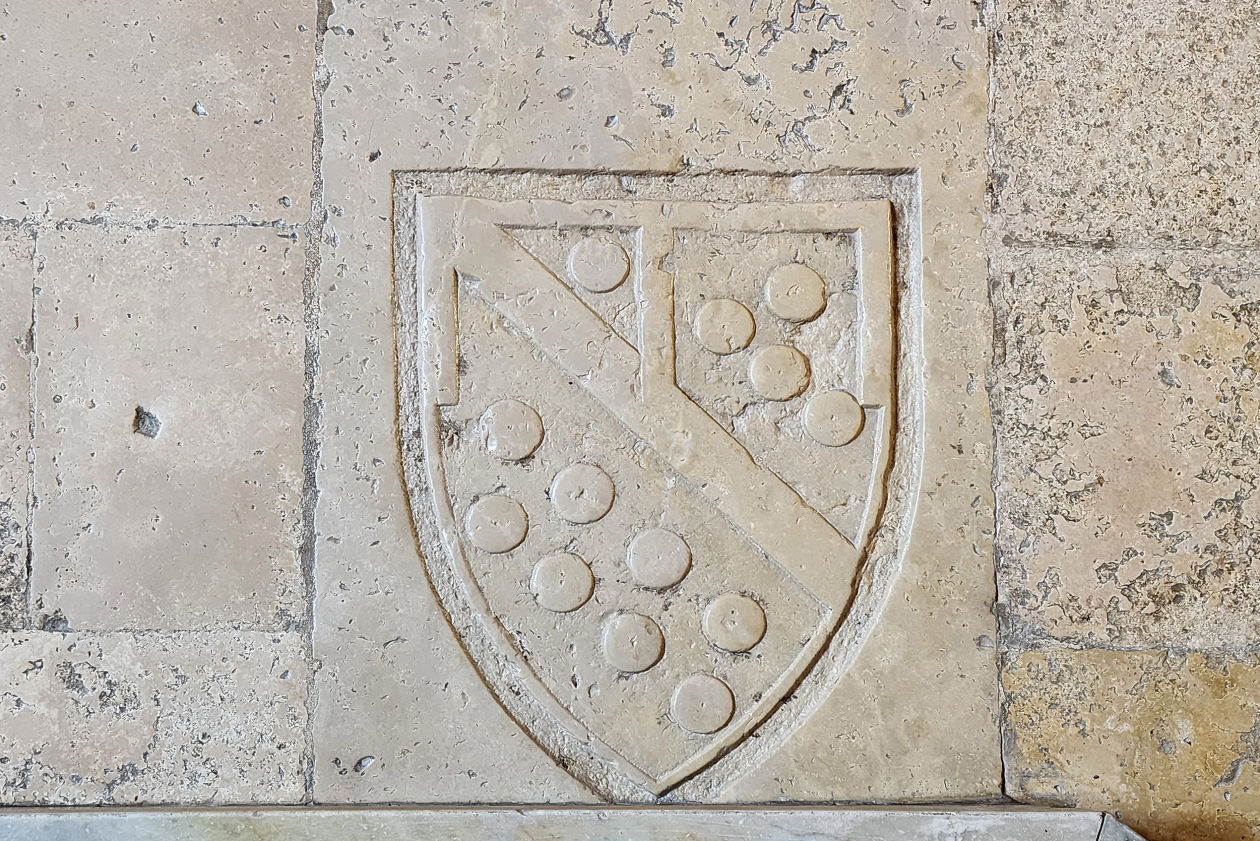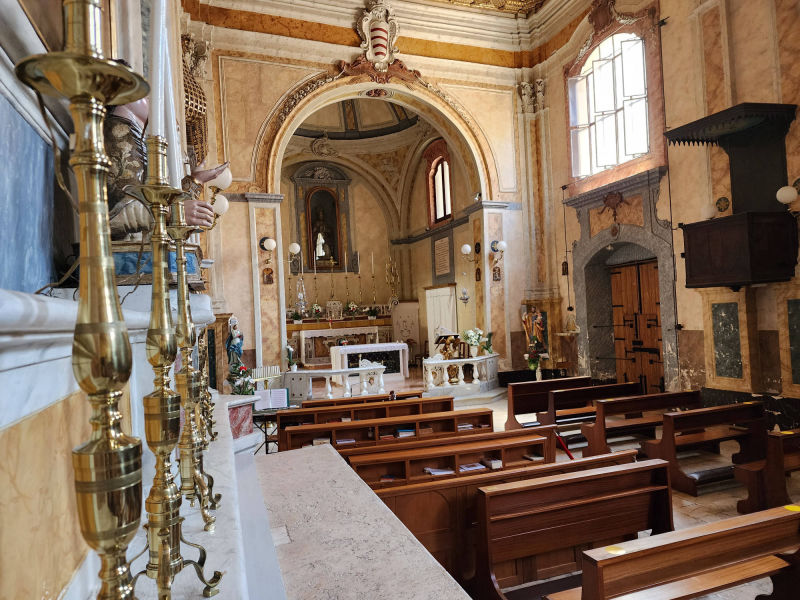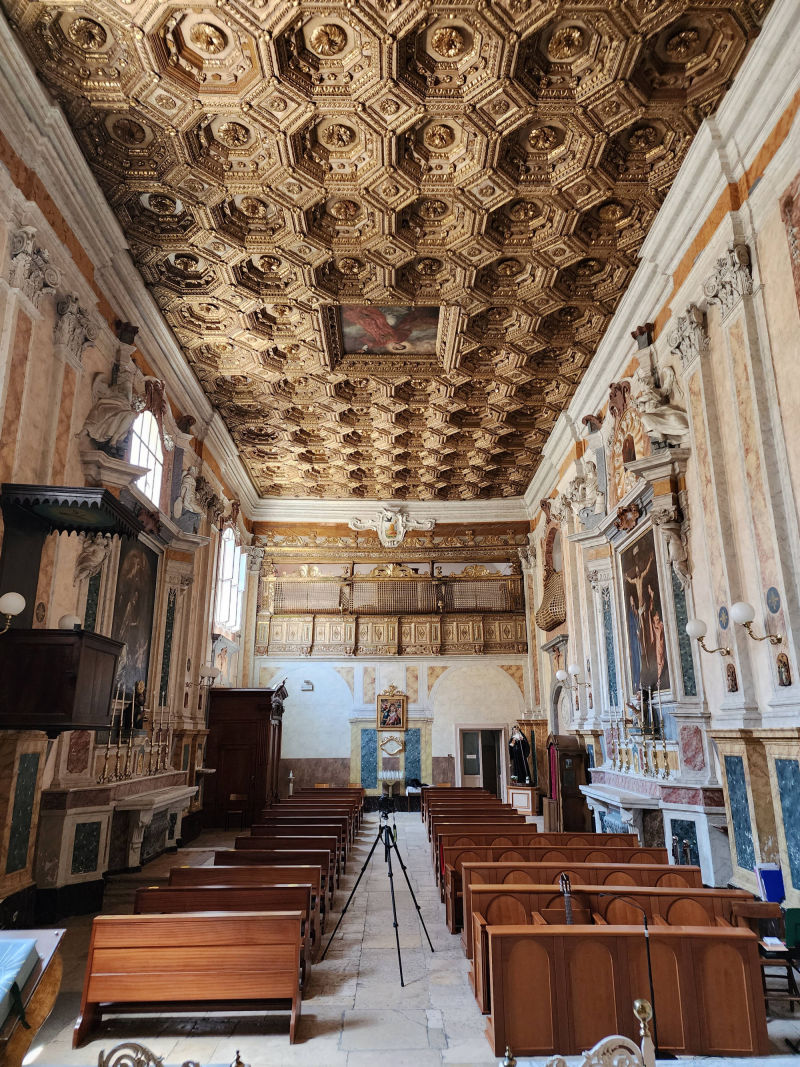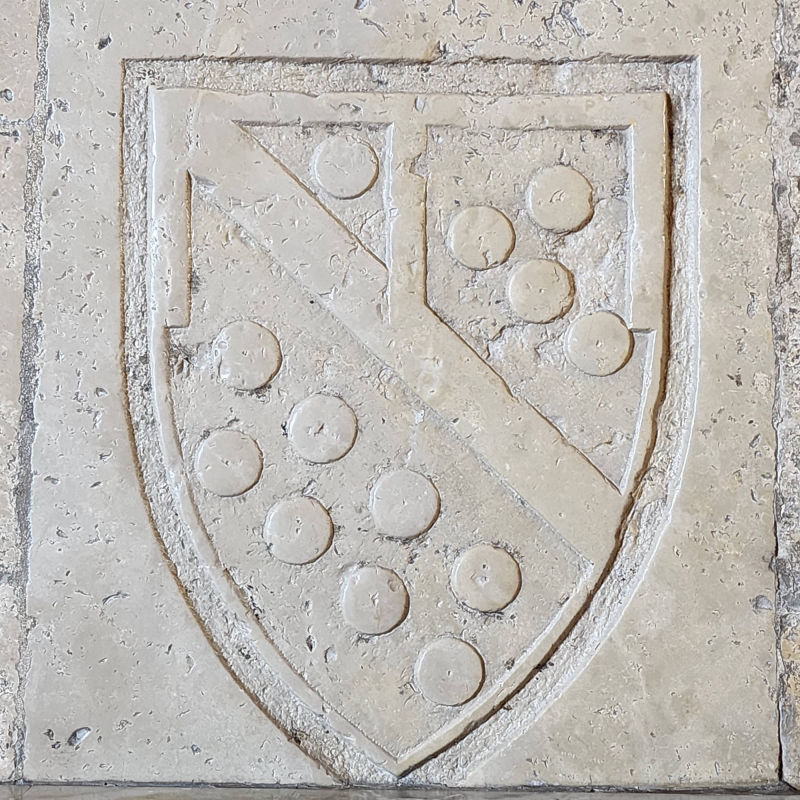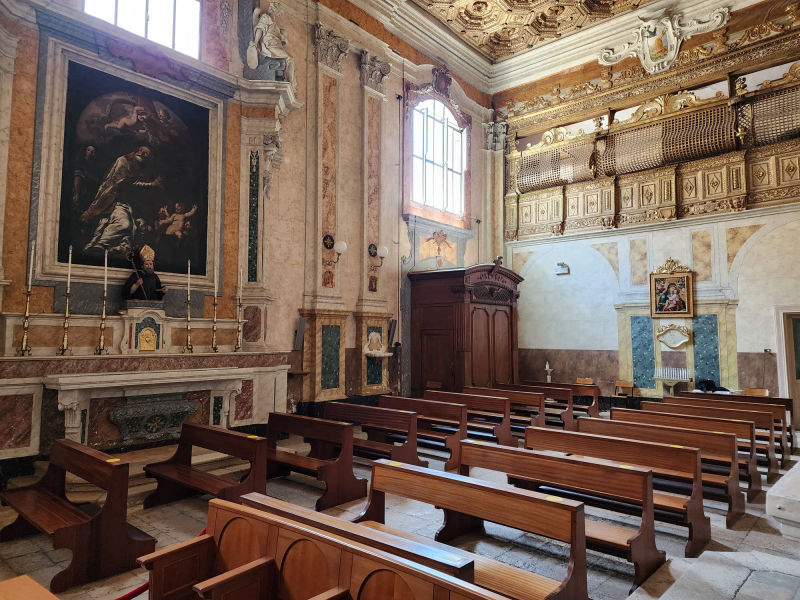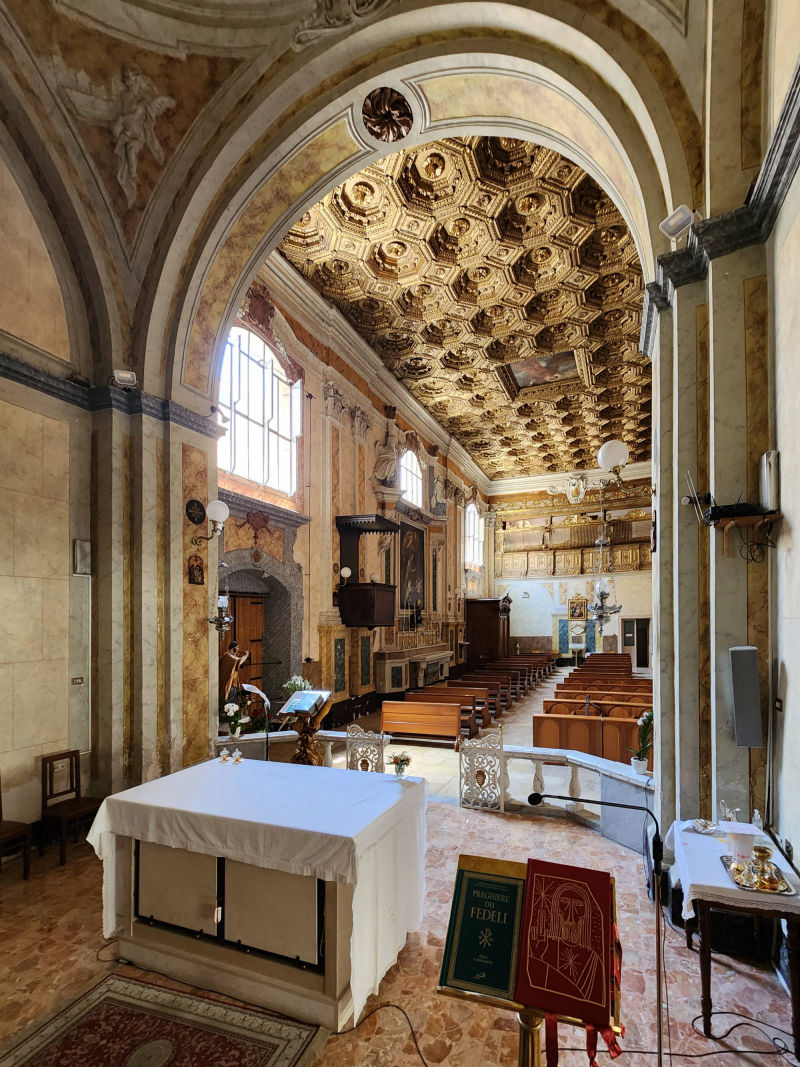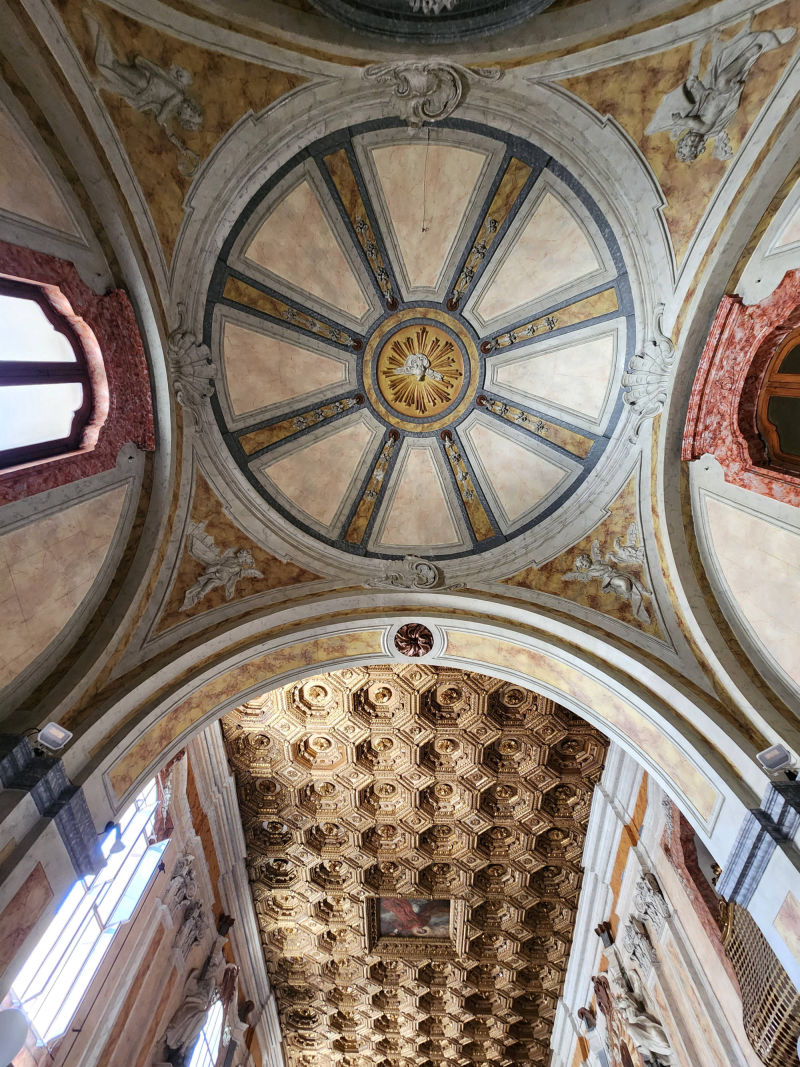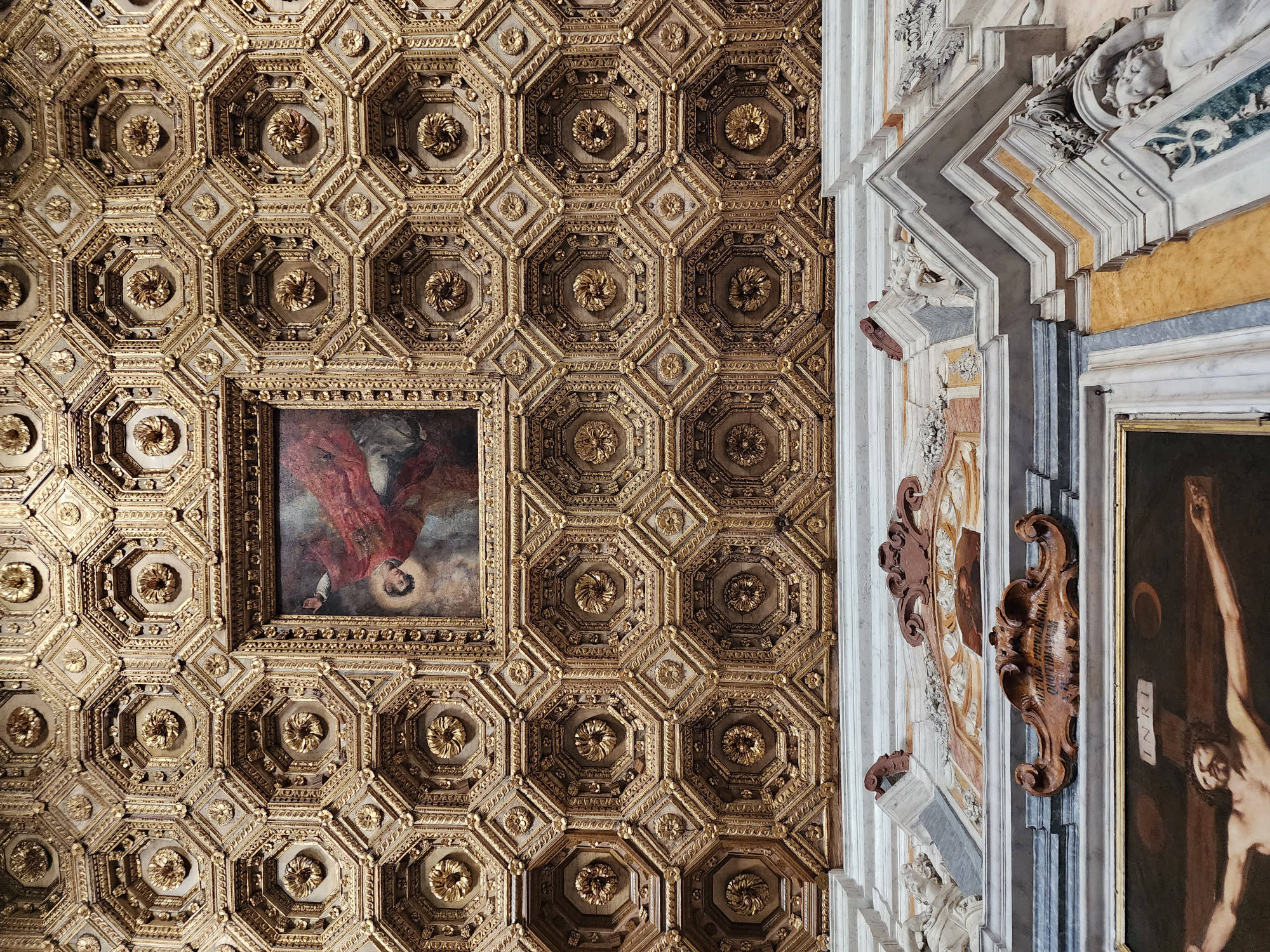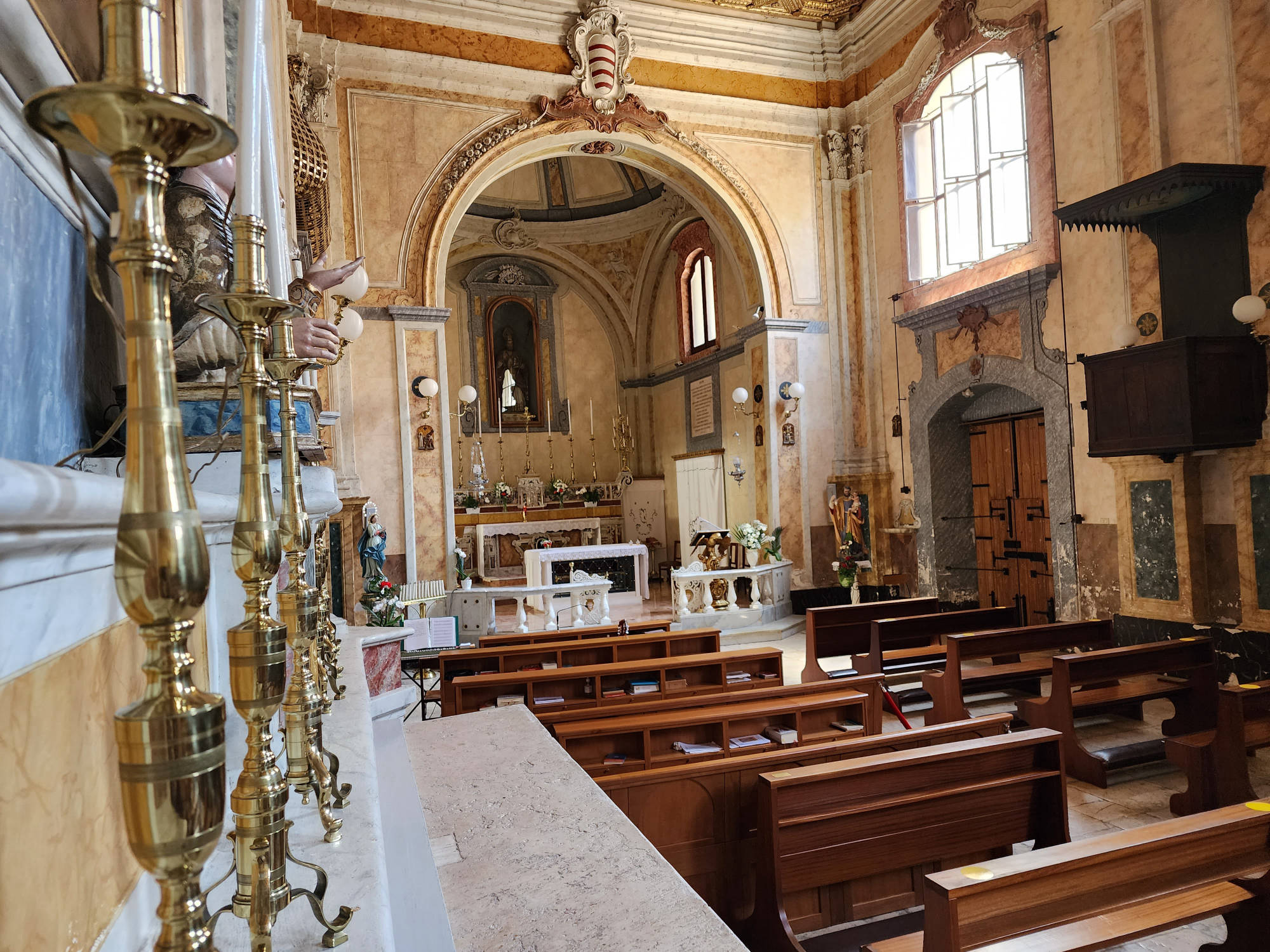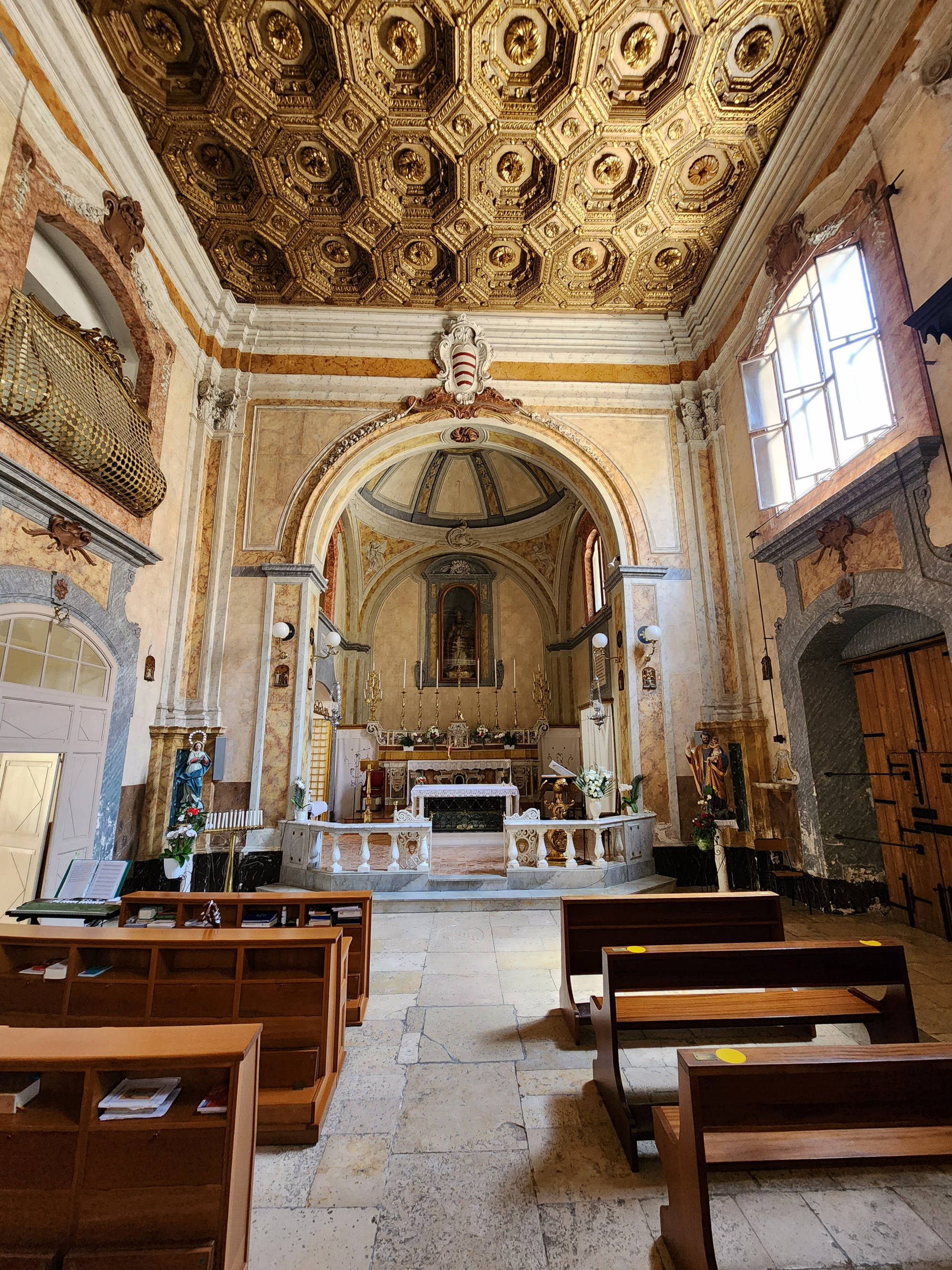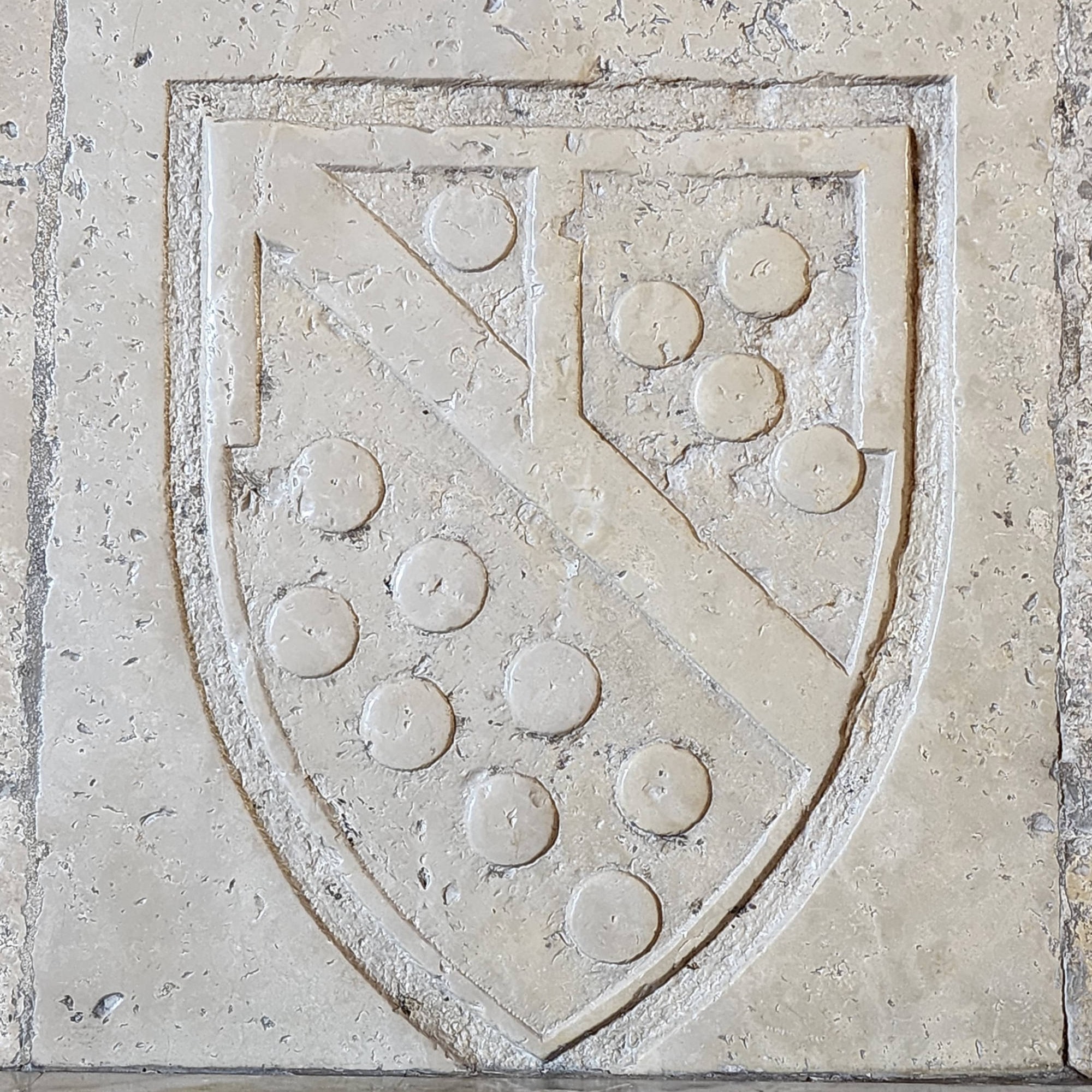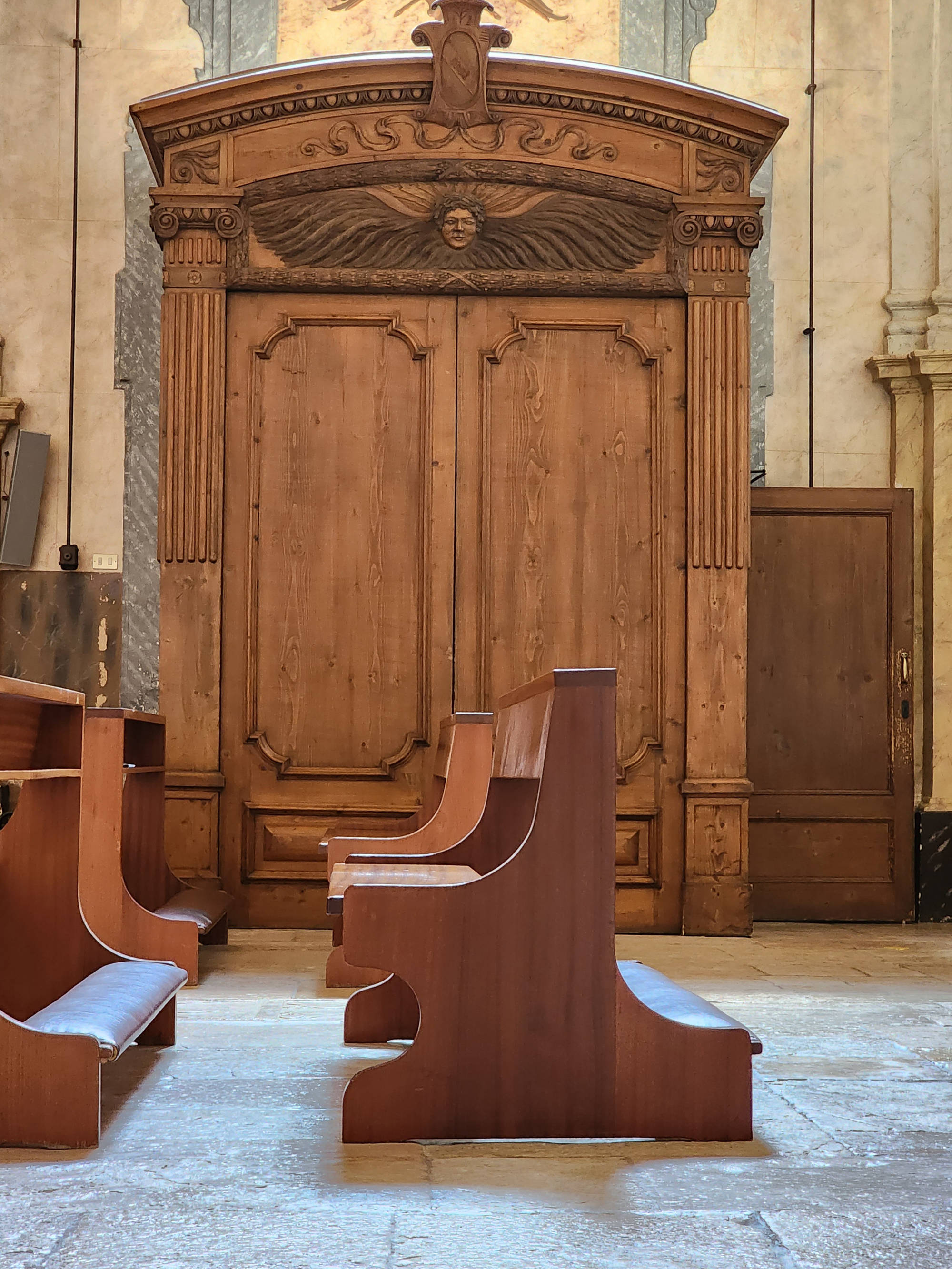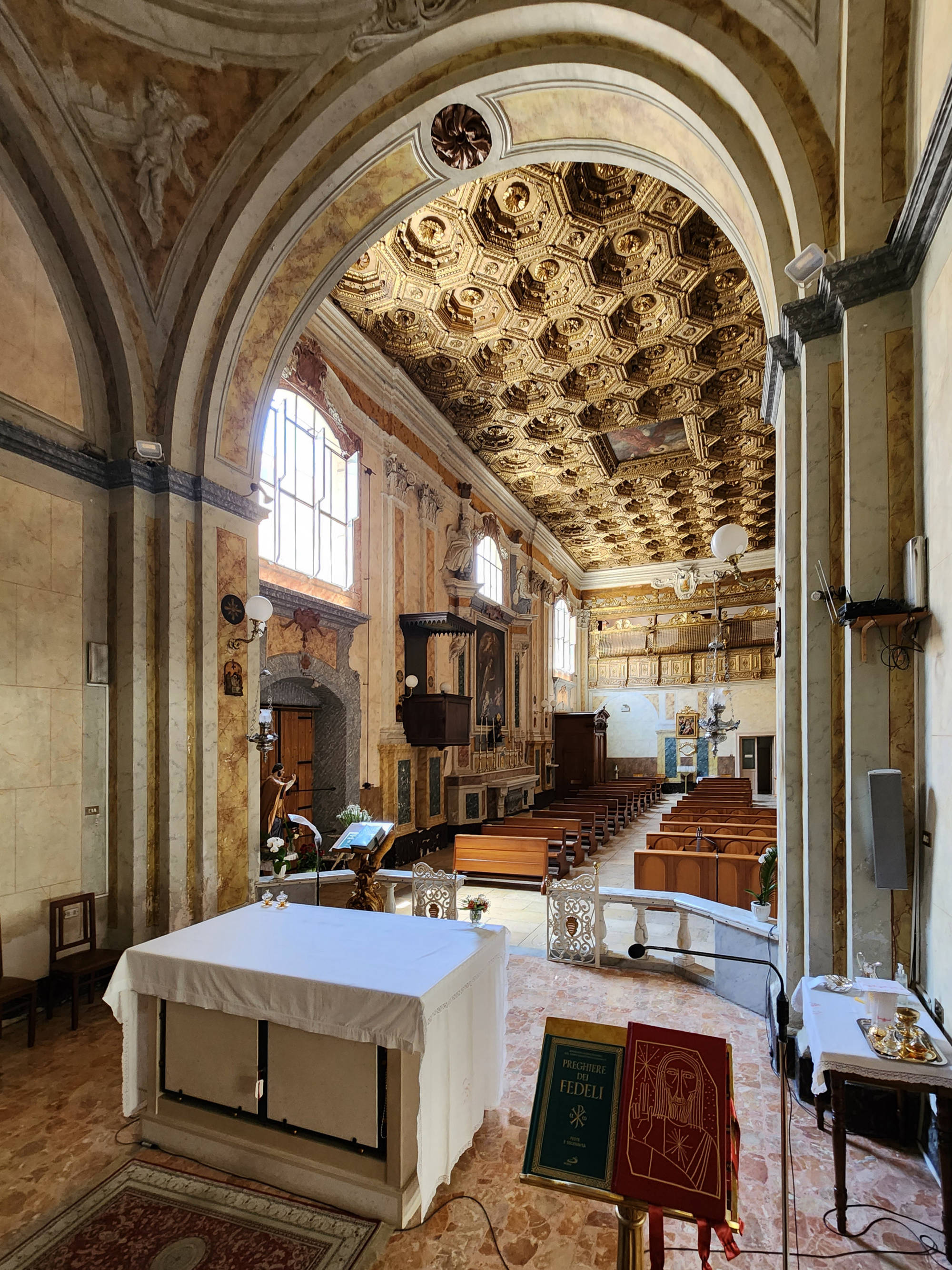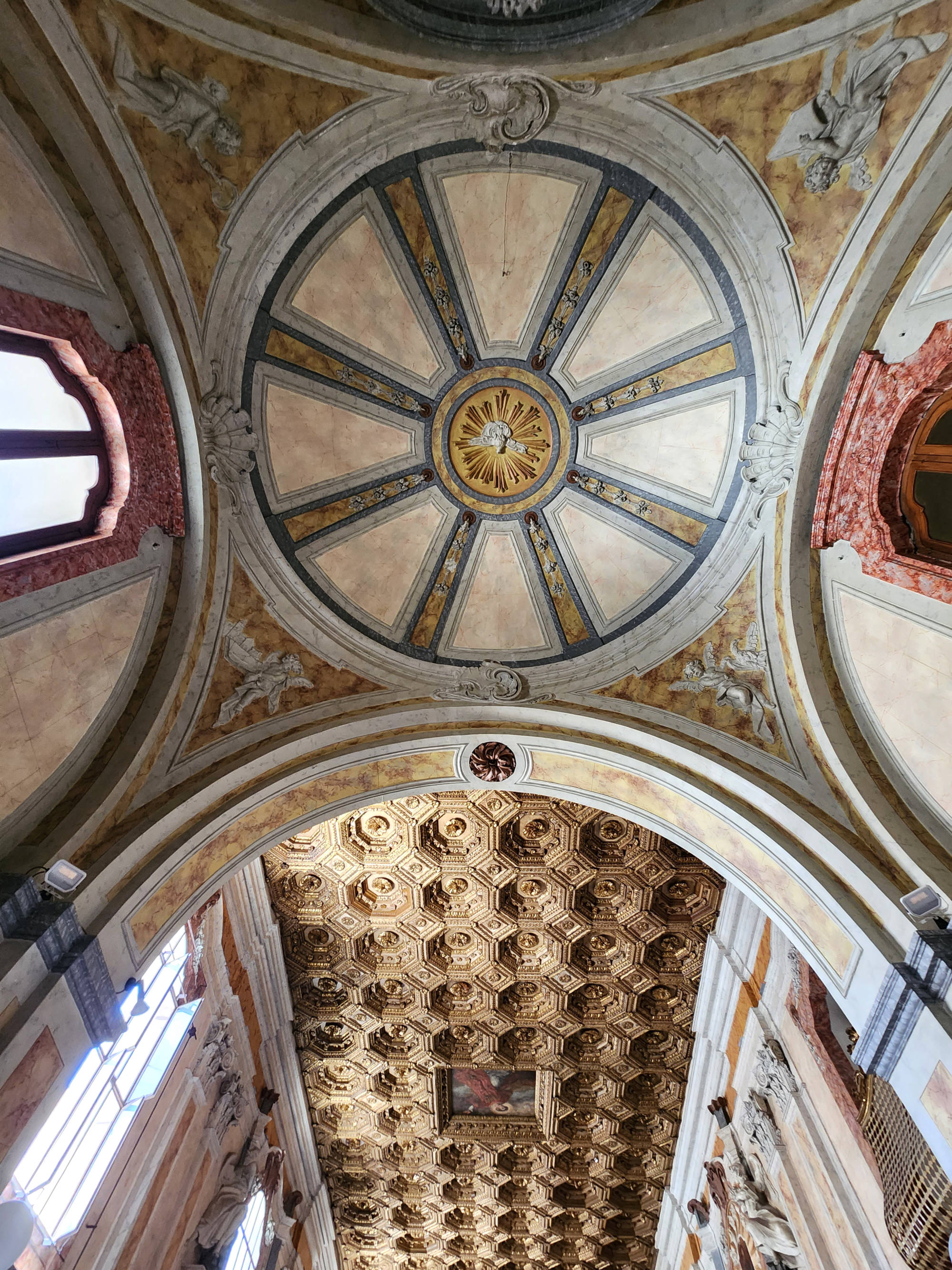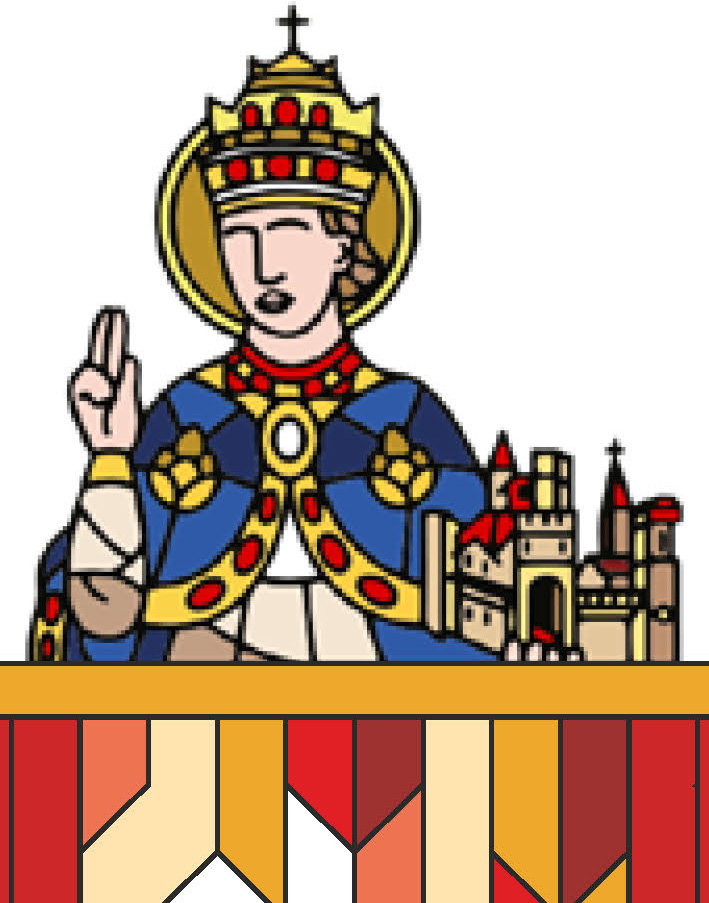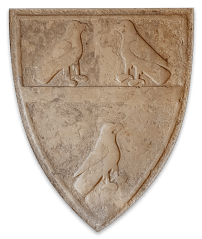THE STRUCTURE
Subjected to various renovations over the centuries, in its current state the church retains few traces of the medieval building.
On the outside, the façade does not entirely present its original appearance: it was in fact partially rebuilt after the earthquake of 1731, a date also reported in the triangular tympanum above one of the access doors. The base, in rustic ashlar, is surmounted by the upper level in tuff and probably once plastered; The structure is completed by the pitched roof and the bell tower, positioned between the church and the adjacent convent.
